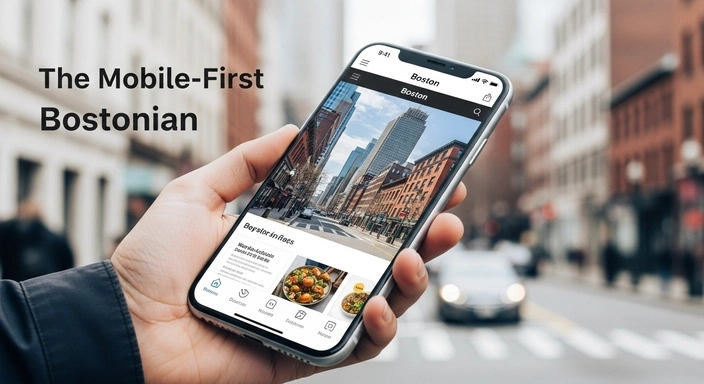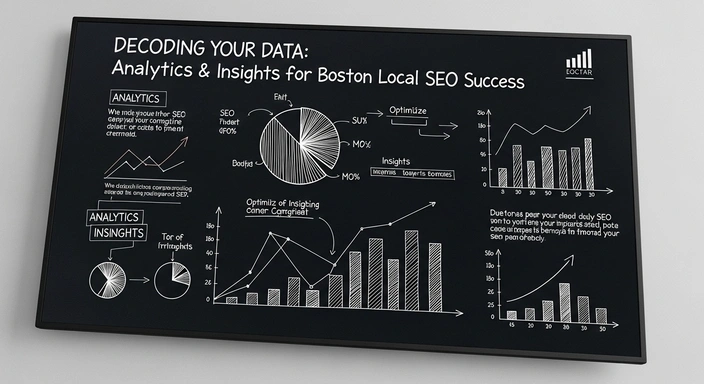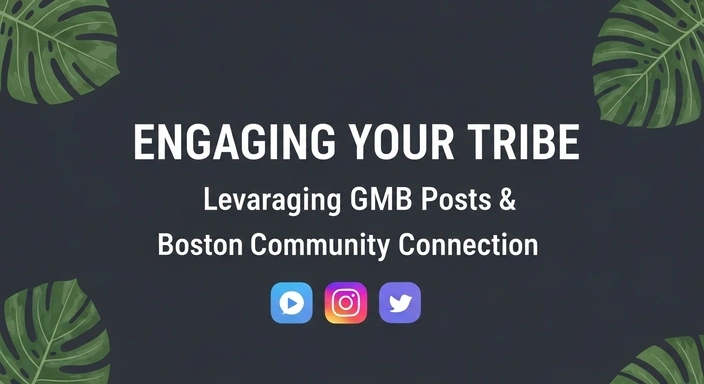This article is the fourth in our 12-part series: Beyond the Boom: How Boston Businesses Can Dominate Local Search & Drive Foot Traffic in a Shifting Economy. If you missed the previous essential guides, catch up on The New Reality: Why Local Search is Non-Negotiable for Boston Businesses in 2025, Your Digital Storefront: Optimizing Your Google Business Profile for Boston Domination, and Beyond Keywords: Understanding Boston’s Hyper-Local Search Intent & How to Capture It. Discover the full series here.
In our relentless pursuit of local digital dominance for Boston businesses, we’ve dissected the economic shifts of 2025, meticulously optimized the intricacies of Google Business Profile (GBP), and gained a profound understanding of hyper-local search intent. Now, it’s time to confront arguably the most immutable and powerful force in local SEO: **Proximity.** This isn’t merely about being physically close; it’s about influencing how Google perceives your business as the most accessible and convenient solution at a customer’s critical moment of need. While you cannot physically relocate your business to be next to every potential customer, you *can* strategically optimize your digital footprint to dominate the perceived proximity within Google’s sophisticated algorithms, turning geographic advantage into a consistent stream of customer traffic.
Imagine a Bostonian stepping off the Red Line at Park Street, suddenly needing a quick, reliable lunch. Their search isn’t for “restaurant Boston”; it’s for “lunch near Park Street Station.” Or a busy professional in the Financial District, unexpectedly needing a notary public – their query is “notary public near me Financial District.” Or a resident of the South End facing a plumbing emergency, searching for “emergency plumber near me.” In these critical micro-moments, distance, combined with speed and convenience, is often the deciding factor. Google’s primary directive for local searches is to provide the most relevant, authoritative, and, crucially, **closest** results, dynamically tailored to the user’s immediate context and intent.
The latest 2023 Local Search Ranking Factors study by Whitespark consistently lists “Proximity of Address to Centroid” as a top 3 ranking factor for local pack results. Google itself consistently states that proximity is a key factor, even if a user doesn’t explicitly include “near me” in their query. Google is incredibly adept at determining a user’s precise location through a complex interplay of GPS, Wi-Fi signals, cellular networks, and device sensors, delivering results tailored to their exact position, often down to a few feet within a building. This deep understanding means that while your physical location is fixed, your ability to influence how Google perceives your geographical relevance across a wide array of Boston neighborhoods and beyond is entirely within your control.
This comprehensive guide will deep dive into the multifaceted strategies of **geo-targeting**. We’ll meticulously explore how Google precisely determines location, how to comprehensively optimize your GBP, website, and off-page signals for specific Boston neighborhoods and towns, and how to effectively serve the diverse geographic needs of our discerning customers, from the historic streets of Beacon Hill to the burgeoning communities of Dorchester. Mastering geo-targeting isn’t just about showing up in one spot; it’s about projecting your business’s presence across all relevant local territories, ensuring your Boston business is perceived as the closest, most reliable, and most convenient option, regardless of where the search begins.
—
Understanding Proximity: Google’s Geographic Intelligence & The Traversal Cost Model

Before we delve into the intricate layers of geo-targeting optimization, it’s critical to possess a profound understanding of how Google determines both the user’s location and the business’s location, and how it precisely calculates the ‘proximity’ factor within its complex ranking algorithms. This understanding extends beyond simple Euclidean distance, embracing a nuanced concept of “traversal cost.”
How Google Determines User Location: A Multi-Signal Pinpoint
Google’s ability to identify a searcher’s location is remarkably precise, often pinpointing them within a few feet. This precision is achieved by leveraging a sophisticated hierarchy of interconnected signals to triangulate a user’s position:
- GPS Data: This is the most accurate and primary signal, especially on mobile devices with location services enabled. GPS (Global Positioning System) provides real-time, highly granular data, crucial for “near me” searches. It’s constantly updating as the user moves, allowing for dynamic local results.
- Wi-Fi Networks: Google maintains an extensive database of Wi-Fi hotspot locations (known as Wi-Fi fingerprinting). By detecting nearby Wi-Fi networks, Google can accurately pinpoint a user’s location even indoors, where GPS signals may be weak or unavailable. This is particularly vital in dense urban environments like Boston, with countless businesses, cafes, and public spaces offering Wi-Fi.
- Cell Tower Triangulation: Less precise than GPS or Wi-Fi, but still an effective method for broader location determination, especially in areas with less dense Wi-Fi infrastructure. Google estimates a user’s location based on their proximity to known cell towers.
- IP Address: While providing a general geographic area (city, region, or even zip code), IP addresses are the least precise of the primary location signals. They offer a starting point but are quickly refined by other, more accurate data.
- Device Sensors: Modern smartphones incorporate accelerometers, gyroscopes, and compasses. Google’s algorithms can use data from these sensors to infer movement, speed, and even direction, which subtly enhances location context, especially for users navigating on foot or by public transit.
- Search History & Cookies: Google learns user preferences, common locations (home, work), and frequently visited places from past search activity and Browse data. This historical context can subtly influence and personalize local search results, even if the explicit query lacks a geo-modifier.
- Manual Location Setting: Users always retain the ability to explicitly set their desired location in Google Search. For instance, a business owner in Barnstable, MA, planning a meeting in Boston, might manually set their search location to “Boston, MA” to get relevant local results there.
This multi-signal approach ensures Google understands precisely where a user is, or where they intend their search to be centered, allowing for exceptionally relevant and localized results, critical for meeting the immediate needs of a Boston searcher.
How Google Determines Business Location: The Geo-Centroid & Real-World Presence
For businesses, Google primarily relies on your verified physical address (for storefronts) or your meticulously defined service areas (for SABs) on your Google Business Profile to establish your digital location. This address or the centroid of your service area becomes the “centroid” or central point for Google’s distance calculations.
- Verified Physical Address: For brick-and-mortar businesses, the precise street address you’ve provided and successfully verified on your GBP is fundamental. It serves as your fixed anchor point in Google Maps and local search. Google’s strict verification processes (especially video verification in 2025) are designed to confirm this real-world presence.
- Service Area (for SABs): For Service Area Businesses (SABs) that don’t serve customers at a physical location (e.g., plumbers, mobile groomers operating from a home office), Google determines their ‘virtual’ service radius based on the specific cities, postal codes, or regional designations they’ve meticulously defined in their GBP. Google’s explicit policy prohibits adding countries or states as service areas (June 2025), reinforcing a hyperlocal focus (boundaries restricted to “about 2 hours of driving time from where your business is based”).
- Local Citations & Mentions: Beyond GBP, Google corroborates your business location through consistent NAP (Name, Address, Phone Number) data across numerous online directories, social media profiles, and local news mentions. These “citations” serve as external validation of your geographic footprint.
- Geographic Keywords in Content: While not a primary location signal, the natural and consistent use of location-specific keywords (neighborhoods, landmarks) on your website and GBP reinforces your geographic relevance to Google’s semantic understanding.
The Dynamic Proximity Equation: Distance + Relevance + Prominence + Traversal Cost
Google’s local ranking algorithm is not a simple linear calculation of distance. It’s a complex interplay of multiple factors, with proximity being a central pillar that is increasingly dynamic:
- Proximity (Distance): This is the geographic distance between the searcher’s location and your business’s verified address or the centroid of your service area. However, this distance is now evaluated through the lens of “traversal cost.”
- Relevance: How well your business and its offerings match the user’s search query and their underlying intent (as meticulously detailed in Post 3). This is profoundly influenced by your GBP’s accurate categories, detailed services, compelling descriptions, and your website’s content.
- Prominence: How well-known, authoritative, and trusted your business is. This is a comprehensive factor influenced by:
- Review Quantity & Quality: A higher volume of positive, detailed reviews signals popularity and trustworthiness.
- Online Citations: Consistent NAP data across a broad spectrum of directories.
- Website Authority: The strength, relevance, and overall SEO performance of the website linked to your GBP.
- Offline Prominence: Google attempts to reflect real-world prominence (e.g., a famous museum or a well-known local landmark business) in online rankings.
- User Engagement: How often users click on your profile, request directions, call, message, or interact with your posts – direct signals of a compelling and useful business. Businesses with over 100 images on their GBP listing see significantly higher direction requests and website clicks (Studio1Hub).
- Traversal Cost (The Evolving Proximity Factor): Beyond simple linear distance, Google’s sophisticated algorithms consider the *ease and time of travel* to a location. This is informed by factors like:
- Road Networks & Traffic: Google’s real-time traffic data, road closures, and optimal routes influence which businesses are considered “closest” in terms of actual travel time.
- Public Transportation: For a city like Boston, proximity is often defined by access to the MBTA (subway, bus, commuter rail). Google considers transit options and travel times.
- Walkability/Bikeability: For searches on foot or bike, Google can factor in pedestrian-friendly routes and sidewalks.
This means a business that is slightly further away but easier to get to (e.g., direct T line, no traffic bottlenecks) might be considered “closer” by Google’s algorithm than a physically nearer but hard-to-reach competitor. This patented “traversal cost” approach creates dynamic proximity, a crucial nuance for Boston.
While you cannot change your physical distance, you have significant control over enhancing your relevance, prominence, and ease of access signals to outrank a closer but less optimized competitor. This is the essence of geo-targeting: meticulously optimizing every digital signal to maximize your perceived geographic relevance and authority across your target Boston neighborhoods, ensuring Google understands you are the best and most convenient option.
—
Foundational Geo-Targeting: Google Business Profile (GBP) Mastery for Location Precision

Your Google Business Profile (GBP) is the absolute cornerstone of your geo-targeting strategy. It is the primary way you tell Google (and potential customers) exactly where you are, what you do, and whom you serve. Meticulous and continuous GBP optimization is non-negotiable for projecting your presence across Boston’s diverse geography.
1. Accurate & Verified Address: The Anchor of Trust and Proximity
For businesses with a physical storefront (e.g., retail, restaurants, medical clinics, offices), your exact street address on GBP is your most fundamental proximity signal. It serves as your fixed anchor point in Google Maps and local search. Accuracy here is paramount.
- Precision is Key: Ensure your address is precisely accurate, including suite numbers, floor numbers, or specific building names (e.g., “One International Place, Suite 200, Boston, MA 02110”). Any deviation can confuse Google’s matching algorithms and frustrate customers.
- Verification is Non-Negotiable: As exhaustively detailed in Post 2, completing Google’s stringent verification process is crucial for validating your physical presence. In 2025, video verification has become the dominant method (often prompted 8 out of 10 times). Be prepared to demonstrate your physical location, proof of management, and operational activity. Without successful verification, your ability to rank locally is severely hampered, as Google cannot confirm your legitimacy.
- NAP Consistency Across the Web: Your Name, Address, and Phone number must be absolutely identical across your GBP, your website, and all other online directories (citations). This includes exact spelling, formatting, and abbreviations (e.g., “St.” vs. “Street”). Inconsistencies confuse Google’s algorithms, dilute your proximity signal, and erode trust with potential customers. Meticulous NAP auditing and correction are foundational geo-targeting tasks.
- Displaying Signage: For physical storefronts, Google also looks for permanent fixed signage of your business name at the address during video verification or Street View crawls. This reinforces your real-world presence.
2. Defining Service Areas: Crucial for Mobile & Home Service Businesses
For Service Area Businesses (SABs) that operate without a storefront (e.g., plumbers, electricians, mobile dog groomers, landscapers, home tutors) or hybrid businesses that visit customers, correctly defining your service areas is a distinct and paramount geo-targeting strategy. Google has increasingly strict guidelines here, specifically updated in June 2025:
- Do NOT Display Physical Address (for Pure SABs): If you don’t serve customers at your physical address (e.g., a home-based business that goes to clients), you *must not* list a physical address on your GBP. This is a common policy violation that can lead to profile suspension. Your profile should be set to “service area only.”
- Specify Precise, Realistic Service Areas: Instead of a physical address, you define the specific geographic areas you serve. Google explicitly disallows adding countries or states as service areas as of June 2025 to enforce hyperlocal relevance. You must be granular: list specific cities (Boston, Cambridge, Somerville, Newton, Quincy), postal codes (e.g., “02127” for South Boston, “02130” for Jamaica Plain), or distinct regional designations within your operational reach.
- “About 2 Hours Driving Time” Rule: Google’s guidelines state that the boundaries of your profile’s overall service area shouldn’t extend farther than about 2 hours of driving time from where your business is based. Over-claiming vast, unrealistic service areas can be seen as manipulative and lead to penalties. For multi-location SABs, each location can have its own profile and specific service area, provided they meet the 2-hour driving time rule (Google Business Profile Help).
- No Radius-Based Designations: You cannot “set your service area as a radius distance around your business.” You must specify by city, postal code, or other defined geographic areas.
Getting this wrong is a pervasive reason for GBP suspension or suppressed local rankings. Google wants to ensure searchers get accurate expectations about how they can interact with your business based on your service model.
3. Categories: Geo-Targeting Through Service Identification
While categories aren’t directly geographic, they are crucial for **relevance**, which in turn profoundly impacts how Google prioritizes your business for geo-targeted local searches. If a Bostonian searches for “Italian restaurant North End,” a business accurately categorized as “Italian Restaurant” will be highly relevant and prioritized, even if it’s slightly further away than a generic “Restaurant.”
- Primary Category: Select the one that *best* describes your core offering (e.g., “Sushi Restaurant” not just “Restaurant”). This is your strongest topical signal.
- Utilize Secondary Categories: Add up to nine additional relevant categories that apply. For a multi-service business, this is crucial for capturing a broader range of relevant searches (e.g., a salon might be “Hair Salon,” “Nail Salon,” and “Day Spa”). Google uses these to understand the full scope of your business and match it to varied local queries.
Inaccurate or insufficient categories severely limit your visibility for relevant local searches, regardless of your physical proximity. Google’s AI relies heavily on these categories to understand your business and serve it for the right intent.
4. Google Posts: Dynamic, Timely, Geo-Specific Messaging
Google Posts are a powerful, dynamic, yet often underutilized feature for communicating timely, geo-targeted information directly on your GBP. They appear in search results and Maps, offering a direct line of communication with local searchers. Posts typically expire after 7 days (or 14 for events), so consistency is key to maintaining freshness signals.
- Types of Geo-Targeted Posts:
- Neighborhood-Specific Offers: “20% off for Beacon Hill residents this week!” or “Special discount for students in Allston-Brighton with student ID.”
- Local Event Participation: “Find our booth at the Dorchester Arts Festival on July 20th!” or “Serving coffee at the Boston Marathon Finish Line today!”
- Seasonal Promotions: “Special summer menu for Seaport office workers,” or “Warm up with our limited-time chowder special near the Freedom Trail.”
- Community News: If your business participates in local initiatives, share updates (e.g., “Proudly sponsoring the South End Youth Soccer League!”).
- Best Practices for Boston Geo-Posts:
- Post Weekly: Aim for consistent, fresh content to keep your profile active. Google favors profiles that show regular engagement.
- Include High-Quality Visuals: Always add a compelling, high-quality photo or video. Posts with visuals see significantly higher engagement. Consider photos that include recognizable Boston landmarks or street scenes.
- Use Strong Calls to Action (CTAs): “Learn more,” “Call now,” “Order online,” “Visit our store.” These prompt immediate conversions.
- Explicitly Localize: Mention Boston neighborhoods, specific landmarks, local events, or street names in your posts to reinforce local relevance and target precise geographic segments.
- Leverage “What’s Happening”: For restaurants, bars, and entertainment venues, utilize this specific post type for timely, current promotions or events that expire soon.
Active, localized Google Posts signal to Google that your business is vibrant, relevant, and engaged with the local community, and they provide immediate, timely information directly to searchers, significantly increasing the likelihood of a conversion. Google’s algorithm is increasingly capable of connecting these dynamic updates to real-time local search intent.
5. Photos & Videos: Visual Geo-Context & Authenticity
Visual content on your GBP is not just for aesthetics; it plays a critical role in reinforcing your local relevance, building trust, and driving engagement. Google’s AI is highly adept at interpreting visual cues for location and business type.
- Upload Frequently & Consistently: Regularly add new photos — seasonal shots, new products, happy customers (with explicit permission), team members, local events you’re part of. Google loves freshness and unique content. Businesses with over 100 images on their GBP listing see significantly higher direction requests and website clicks.
- Diversity of Content: Include a comprehensive range of visuals: clear exterior shots (especially street view to show your entrance), inviting interior ambiance, enticing product close-ups, action shots of your services in progress, and professional headshots of your team. This diversity provides a complete and trustworthy picture of your Boston business.
- Quality Matters Immensely: Use high-resolution images (at least 720p, 10MB maximum file size for photos, up to 30 seconds for videos) that are well-lit, professional, and accurately represent your business. Blurry, low-quality, or amateurish photos deter potential customers and signal a lack of professionalism to Google. Avoid stock photos where possible; authenticity is key.
- Geo-Tagging (Metadata): While Google’s AI is advanced, ensuring your photos are geo-tagged with your business’s precise location (latitude and longitude in the photo’s EXIF data) can subtly reinforce local relevance. This can be done with specialized tools or by taking photos on-site with your phone’s location services enabled.
- Local Landmarks & Contextual Cues: Include photos that subtly feature nearby Boston landmarks, recognizable neighborhood elements, or even distinct architectural styles (e.g., your storefront with a view of the Boston Common, a team photo near the Rose Kennedy Greenway, your building’s unique brownstone facade). This visually confirms your location for users and provides strong contextual signals for Google’s image recognition algorithms.
- Client Site Photos (for SABs): If you are a service business that visits clients (e.g., a home renovation contractor), showcase high-quality photos of your team working at various client sites across different Boston neighborhoods (always with explicit client permission and respecting privacy). This visually demonstrates your actual service footprint and competence in diverse local settings.
- Virtual Tours: For physical locations, a professional 360° virtual tour (Google Street View compatible) is a significant differentiator. They provide an immersive experience, increase dwell time on your GBP, help customers feel comfortable visiting before they arrive, and directly influence conversion rates. Businesses with virtual tours see higher engagement and better local pack visibility.
—
Website Geo-Targeting: Creating Digital Neighborhood Hubs & Thematic Content

Beyond your Google Business Profile, your website’s architecture and content are paramount for robust geo-targeting. Your site must explicitly tell Google which geographic areas you serve and why you are the best choice for customers in those specific Boston locations. This involves building a network of localized content that mirrors the diverse geography of your target audience.
1. Dedicated Location/Service Area Pages: The Core of Your Geographic Reach
This is arguably the most powerful website strategy for geo-targeting, especially for businesses serving multiple Boston neighborhoods, surrounding cities (like Cambridge, Somerville, Newton, Quincy), or the broader Greater Boston area. Create a unique, comprehensively optimized page for each key neighborhood, town, or service territory you operate within.
- Unique, High-Quality Content is Paramount: This is a critical point. Do NOT simply duplicate content across these pages, as Google’s Helpful Content System and recent core algorithm updates (including the June 2025 Core Update) heavily penalize thin, low-value, or duplicated content. Each page must offer unique, valuable, and genuinely relevant content for that specific location.
- Localized Introductions: Begin each page with an engaging, unique introduction that recognizes the specific character, demographics, or challenges of that particular Boston neighborhood. For example: “Plumbing services meticulously tailored for the historic brownstones and modern lofts of Beacon Hill,” or “Digital marketing solutions empowering the innovative biotech startups in Kendall Square, Cambridge.”
- Specific Services & Solutions: Detail the specific services or products you offer *in that particular area*. Are there unique needs or common problems relevant to that neighborhood? (e.g., a roofing company might discuss “slate roof repair in the South End” vs. “commercial roofing in the Seaport”).
- Local Testimonials & Case Studies: Feature genuine testimonials from clients specifically located in that neighborhood. Highlight success stories or projects completed within that exact geographic area. This builds powerful local social proof and reinforces your experience (E-E-A-T).
- Local FAQs: Address common questions specific to customers in that particular neighborhood or related to local regulations (e.g., “What are the zoning laws for home additions in West Roxbury?”).
- Local Imagery: Use photos relevant to that neighborhood – your team working there, specific landmarks, or even photos that capture the unique architectural style of the area.
- Neighborhood Demographics & Business Types: Incorporate insights about the local population, predominant industries, or unique cultural aspects (e.g., discuss student populations in Allston/Brighton for services targeting that demographic, or the diverse residential and commercial mix of Dorchester).
- Clear NAP Integration: Ensure your business’s Name, Address (if physical), and Phone number are prominently displayed on each relevant location page. For SABs, ensure your service area details are clear.
- Internal Linking Strategy: Create a clear and logical internal linking structure between your main services page and these specific location pages. Also, link strategically between relevant local blog posts and these pages to distribute authority and improve navigability.
- Avoid Thin Content & Duplicate Warnings: Each location page should have sufficient, unique content (aim for at least 500-1000 words of unique content per page) to avoid being flagged as “thin content” or penalized for duplication. Consider using canonical tags only if absolutely necessary for technical reasons, but ideally, each page is unique enough to stand alone.
2. On-Page SEO for Geo-Targeting: Weaving in Local Context for Google’s AI
Every on-page element needs to be meticulously optimized to explicitly signal your geographic relevance to Google’s sophisticated AI. This goes beyond mere keyword insertion; it’s about providing rich, semantic context.
- Localized Title Tags: Your page title is one of the strongest signals. Include your primary service keyword + location. Keep it concise (50-60 characters for desktop visibility). (e.g., “<title>Best Italian Restaurant | North End Boston | [Your Business Name]</title>” or “<title>Commercial HVAC Repair | Financial District Boston</title>”).
- Geo-Specific Meta Descriptions: A compelling summary (150-160 characters for optimal display) that includes your location and a strong call to action or key benefit. (e.g., “Boston’s top-rated plumbers serving Beacon Hill with emergency services. Fast, reliable & trusted local experts. Get a quote!”)
- H1 Headings: Your main heading should clearly state the page’s topic, always including specific local modifiers (e.g., “<h1>Top-Rated Emergency Electricians Serving Dorchester, MA</h1>” or “<h1>Your Trusted Dentist in the Heart of Back Bay</h1>”).
- Subheadings (H2, H3, H4): Break down your content into digestible sections, strategically incorporating variations of local keywords and addressing specific aspects relevant to that neighborhood (e.g., “<h2>Residential & Commercial HVAC Services in Back Bay</h2>,” “<h3>Expert Boiler Repair for Historic Brownstones</h3>”).
- Body Content: This is where you demonstrate comprehensive local context. Naturally weave in local keywords, landmarks, street names, specific community characteristics, and conversational phrases relevant to the neighborhood. Discuss local problems you solve or local opportunities you address. For instance, a pest control company might talk about “rodent control challenges in Boston’s dense historic districts” or “mosquito abatement in parks near the Charles River.” Avoid keyword stuffing; focus on natural language that proves your understanding of the local environment.
- Image Alt Text & File Names: Optimize all images. Use descriptive alt text and file names that include local keywords and specific landmarks (e.g., `pizza-north-end-boston.jpg`, `alt=”Authentic thin crust pizza at Regina Pizzeria North End, Boston”` or `boston-public-garden-trees.jpg`, `alt=”Fall foliage in Boston Public Garden”`). This helps Google’s image recognition algorithms understand the geographic context.
- Embedded Google Maps: Embed an interactive Google Map with your business location (for storefronts) or the center of your service area (for SABs) on relevant service or contact pages. This visually reinforces your local presence, provides easy access to directions, and is a strong geographic signal to Google.
3. Local Blog Content: Fulfilling Informational Intent with Geo-Context & E-E-A-T
As discussed in Post 3, your blog is a powerful tool for addressing informational intent and establishing your business as a local expert. For geo-targeting, ensure your blog posts are infused with deep local context and target specific neighborhood interests, bolstering your E-E-A-T.
- “Best Of” Guides: Create definitive local guides that subtly position your business. Examples: “Best Coffee Shops in Cambridge for Remote Work,” “Top Pizzerias in the North End for Families,” “Best Boutiques on Newbury Street for Unique Finds,” or “Top Spots for Craft Beer in Allston.” These guides inherently embed geo-targeting.
- Local How-To Guides: Provide practical local advice. Examples: “How to Find Affordable Parking in Downtown Boston,” “Guide to Navigating the MBTA for First-Time Visitors from Logan Airport,” “Tips for Renovating a Brownstone in Back Bay: A Local’s Guide,” or “Preparing Your Boston Home for Harsh Winters.”
- Community Spotlights & Interviews: Feature other local Boston businesses, non-profits, community leaders, or local historical figures within specific neighborhoods. This builds local connections, can lead to valuable backlinks, and showcases your deep community ties. (e.g., “Meet the Owner: A Chat with the Oldest Bookstore in Beacon Hill”).
- Seasonal or Event-Based Content: Capitalize on Boston’s vibrant calendar. Examples: “A Guide to Fall Foliage Tours Near Boston,” “What to Do Around TD Garden on Game Day,” “Your Guide to Marathon Monday Spectator Spots,” or “Summer Concert Series at the Esplanade: What to Know.”
- Addressing Local Challenges: Write about problems specific to Bostonians that your business solves (e.g., “Dealing with Basement Flooding in Historic Boston Homes,” “Finding Childcare in Boston’s North End,” “Navigating Boston’s Traffic for Medical Appointments”).
Each piece of content should not only provide immense value but also consistently reinforce your business’s genuine connection to the Boston community and its various geographic segments, demonstrating your unparalleled local Experience and Expertise (E-E-A-T).
—
Off-Page Geo-Targeting: Building Local Authority & Citations

Beyond your owned digital properties (GBP and website), your presence across the wider web plays a crucial role in geo-targeting by verifying your location, building your local authority, and enhancing your prominence. Google correlates these external signals with your internal optimization efforts to confirm your real-world presence and relevance.
1. NAP Consistency & Local Citations: Verifying Your Footprint
Your Name, Address, and Phone number (NAP) must be absolutely identical — down to the letter and punctuation — across *every* online directory, social media platform, and listing where your business appears. These “citations” (mentions of your business online, with or without a link) act as crucial trust signals for Google, verifying your physical presence and geographic service areas. Inconsistencies confuse Google’s algorithms and dilute your proximity and authority signals.
- Core Directories: Ensure meticulous consistency on major platforms like Yelp, Apple Maps, Bing Places, Facebook, and Google Business Profile itself.
- Local & Niche Directories: Seek out Boston-specific directories (e.g., Boston.com business listings, Boston Chamber of Commerce directories), neighborhood business associations (e.g., South End Business Alliance, Cambridge Chamber of Commerce, Dorchester Board of Trade), and industry-specific local listings (e.g., “Massachusetts Lawyers Directory,” “Boston Restaurants Association”). These hyperlocal and niche citations are incredibly powerful.
- Data Aggregators: Ensure your information is consistent across major data aggregators (like Factual, Infogroup, Localeze, ExpressUpdate), which distribute your business information to hundreds of other platforms. Errors here can propagate quickly.
- Social Media Profiles: Your business information on Facebook, Instagram, LinkedIn, and even local community groups should precisely match your GBP.
Meticulous NAP auditing (using tools like BrightLocal or Moz Local) and consistent citation building are foundational geo-targeting best practices. Prioritize accurate listings over sheer quantity. Google’s quality raters often check citations for accuracy.
2. Local Link Building: Earning Community Endorsement & Digital Authority
High-quality backlinks from other reputable, locally relevant websites are powerful signals of authority and geographic relevance to Google. These links tell Google that other Boston-based entities trust and endorse your business, significantly contributing to your Prominence factor.
- Partnerships with Complementary Businesses: Collaborate with non-competing Boston businesses for mutual referrals, content collaborations, or mutual website links. For example, a local bakery could partner with a coffee shop for a joint promotion (and link exchange), or an interior designer could collaborate with a local furniture store for a blog series on “Designing Your Boston Home.”
- Sponsor Local Events/Organizations: Becoming a sponsor for a charity run in the Back Bay, a community festival in the North End, a youth sports league in West Roxbury, or an academic event at a Boston university (e.g., at MIT, Harvard, or Boston University) often results in a valuable link from the event’s website or the organization’s sponsorship page. These links are inherently geo-relevant and carry significant authority.
- Join Local Chambers of Commerce & Business Associations: Active membership in Boston’s various chambers (e.g., Greater Boston Chamber of Commerce, Newton-Needham Chamber, Quincy Chamber) and neighborhood business associations often includes a profile and a valuable link to your website. Active participation can lead to more prominent mentions and networking opportunities.
- Local Media & PR: Generate buzz through local Boston news outlets (online or print, such as the Boston Globe, Boston Herald, Boston.com), community blogs (e.g., Universal Hub, Boston Magazine online), or university publications. Offer expert commentary on local issues related to your industry, publish press releases about local achievements, or host local events. Media mentions, even unlinked, contribute to your brand’s prominence and trust (implied links).
- Content Collaborations: Offer to write guest posts for other Boston-based blogs, or invite local experts to contribute to your own blog. This creates natural, relevant link opportunities.
- Supplier/Client Links: If you work with local Boston-based suppliers or serve prominent local clients, explore opportunities for mentions or links on their “Partners” or “Client” pages.
These efforts not only boost your SEO by strengthening your digital authority and geographic relevance but also reinforce your real-world ties within the Boston community, fostering relationships that can lead to both digital growth and tangible business opportunities. (This detailed strategy will be further explored in Post 6: Local Link Building for Boston: Earning Authority and Credibility in Your Community).
—
Overcoming Geo-Targeting Challenges in Boston’s Diverse Landscape
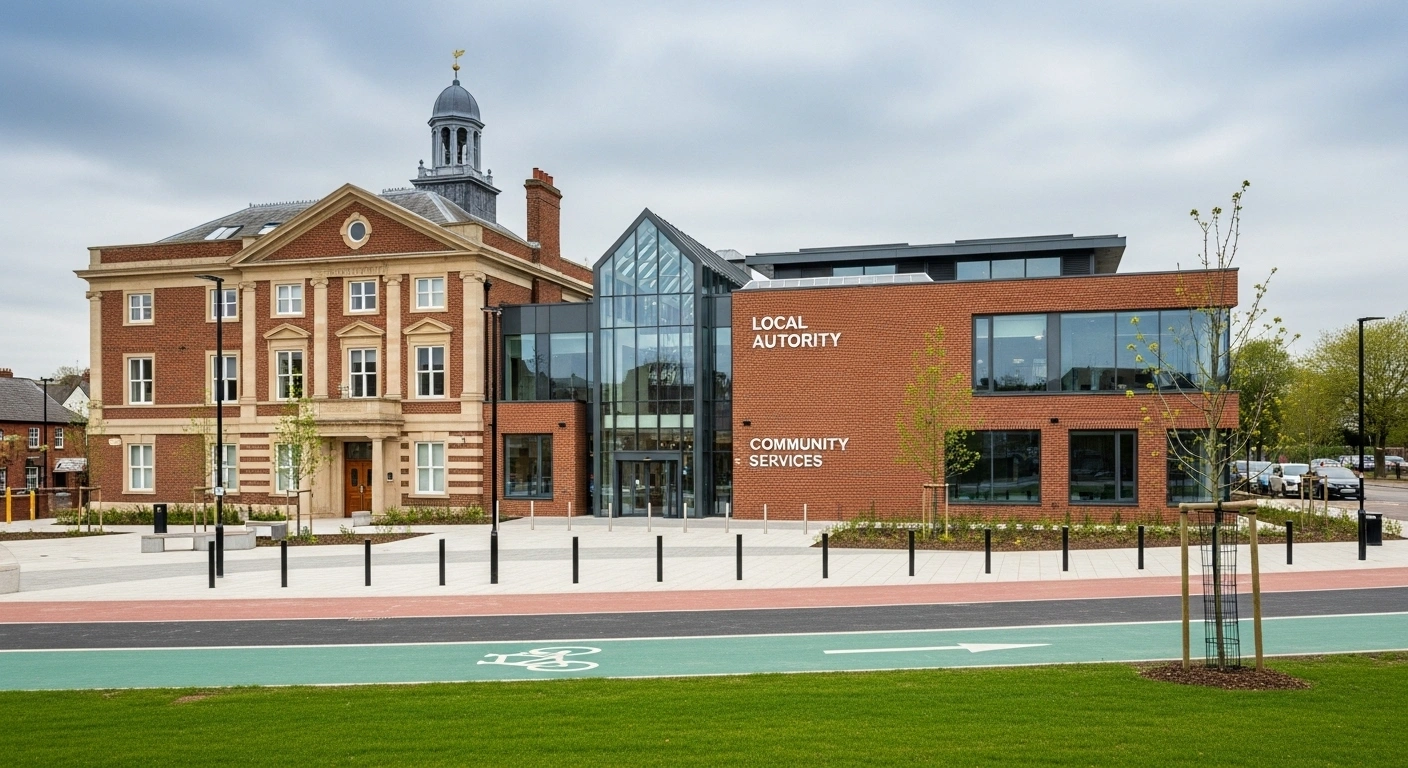
Boston’s unique urban fabric — its dense core, distinct historical neighborhoods, and surrounding suburban towns — presents specific geo-targeting challenges that demand tailored, nuanced strategies. A one-size-fits-all approach will fail to capture the city’s diverse geographic nuances.
1. The Downtown Core vs. Neighborhoods Distinction: Adapting to New Flows
The profound impact of remote and hybrid work (as discussed in Post 1) means that businesses heavily reliant on weekday commuter traffic in the Financial District, Downtown Crossing, parts of the Seaport, and even Kendall Square must strategically pivot their geo-targeting.
- Attracting Local Residents & Hybrid Workers: Optimize for evening and weekend searches by Boston residents who now live closer to or choose to spend their leisure time in the city. Develop content that appeals to this demographic.
- Targeting Tourists & Visitors: Leverage Boston’s rich history and status as a tourist destination. Create content (GBP posts, blog articles) that targets visitors searching for services near historical landmarks (e.g., “Dining near the Freedom Trail,” “Souvenir shops near Faneuil Hall”).
- Hotel Partnerships: For hospitality-related services (restaurants, spas, unique retail), strategic partnerships with local hotels in the downtown core can drive geo-targeted tourist and visitor traffic through their recommendations and online directories.
- The “Donut Effect” Response: Acknowledge the “donut effect” (empty downtowns, bustling periphery). For businesses in the urban core, this means a dual geo-targeting strategy: strengthening your hyper-local presence for those still in the center, while also developing strategies to capture traffic from the outer neighborhoods and suburbs that are now home to more daily activity.
Conversely, businesses in traditionally residential neighborhoods like Dorchester, Jamaica Plain, Roslindale, or even suburban centers like Newton or Quincy may see increased local activity. Geo-targeting here means becoming the undisputed leader for searches originating directly from and explicitly mentioning those communities, focusing on community events, local amenities, and neighborhood-specific needs.
2. Multi-Location Businesses: Scaling Geo-Targeting with Precision
If you operate a business with multiple physical locations across Boston (e.g., a chain of dry cleaners, a multi-branch bank, a restaurant group, or a fitness studio chain), managing your geo-targeting at scale is complex but critical. Each location needs its own distinct and robust local SEO strategy:
- Individual, Verified Google Business Profiles: Each unique physical location *must* have its own, fully optimized and verified GBP. These profiles should be managed centrally for brand consistency but optimized individually for their specific geographic context.
- Dedicated, Unique Location Pages on Website: Every physical branch or service hub needs its own dedicated page on your website. Crucially, these pages must contain *unique content* relevant to that specific location, avoiding duplication. Include specific NAP for that branch, local testimonials, and content detailing services or staff relevant to that neighborhood.
- Consistent NAP Across All Citations: Maintain strict NAP consistency for each individual location across all online directories and platforms. This can be a significant undertaking but is essential for robust geo-targeting.
- Store Locator/Branch Finder: Implement an easily navigable store locator on your website, utilizing structured data (Schema markup) to help Google understand your multiple locations.
- Internal Linking: Ensure a clear internal linking structure that connects your main brand site to each individual location page.
3. The “Distance” Factor: Maximize Relevance & Prominence to Compensate
As established, you cannot physically change your distance to a searcher. Therefore, for customers who are slightly further away but still within your viable service radius, you *must* maximize your **relevance** and **prominence** to convince Google you’re the best option despite the greater distance. This is where holistic SEO shines.
- Hyper-Relevant, Deep Content: Ensure your website and GBP content directly and comprehensively addresses the searcher’s query and intent better than closer, less optimized competitors. If you are the ultimate authority on “historic home renovation in Boston,” Google might rank you higher even if you’re a few blocks further than a less specialized competitor.
- Exceptional Reviews & Reputation: A higher volume of current, positive, and detailed reviews (especially those mentioning specific services or local areas) can significantly overcome a slight distance disadvantage. Businesses with 4+ star ratings see up to 30% higher conversion rates, which directly translates to higher engagement signals and improved prominence in Google’s eyes.
- Strong Website Authority & Trust: A high-authority domain associated with your GBP signals overall trustworthiness and prominence. Google’s E-E-A-T guidelines are crucial here; an expert, authoritative, and trustworthy website is more likely to be favored, even at a greater distance.
- User Engagement Signals: Focus on optimizing your GBP and website to encourage user engagement (clicks, calls, directions, messages, time on site). High engagement tells Google that users find your business helpful and relevant, boosting prominence.
4. Geo-Fencing (Beyond Paid Ads): Informing Organic Strategy
While geo-fencing is primarily a paid advertising technique (targeting mobile users within a precise geographic boundary with ads), the underlying concept can powerfully inform your organic geo-targeting strategy:
- Identify Key Micro-Zones: Think about the exact geographic areas (e.g., within 0.5 miles of a specific T station, a 3-block radius around a major Boston landmark like the Old State House, or a specific block of Newbury Street) where your ideal customers are concentrated.
- Create Hyper-Local Content for These Zones: Develop blog content or GBP posts specifically tailored for these micro-zones. For example, a restaurant near the Boston Common could write a blog post titled “Best Places to Picnic Near Boston Common: Grab Your Food Here!” A bookstore near Tufts Medical Center might publish a “Quick Lunch Guide for Professionals Near Tufts.”
- Optimize for “Micro-Moments”: These hyper-local searches often occur in “I-want-to-go” or “I-want-to-buy” micro-moments. Ensure your content and GBP are optimized to immediately fulfill these urgent, geographically specific needs.
This level of granularity ensures your geo-targeting efforts are as precise and effective as possible, even without direct paid ad spend, by aligning your content with the exact geographic context of user intent.
—
Measuring Geo-Targeting Success: Analytics for Boston’s Proximity Play
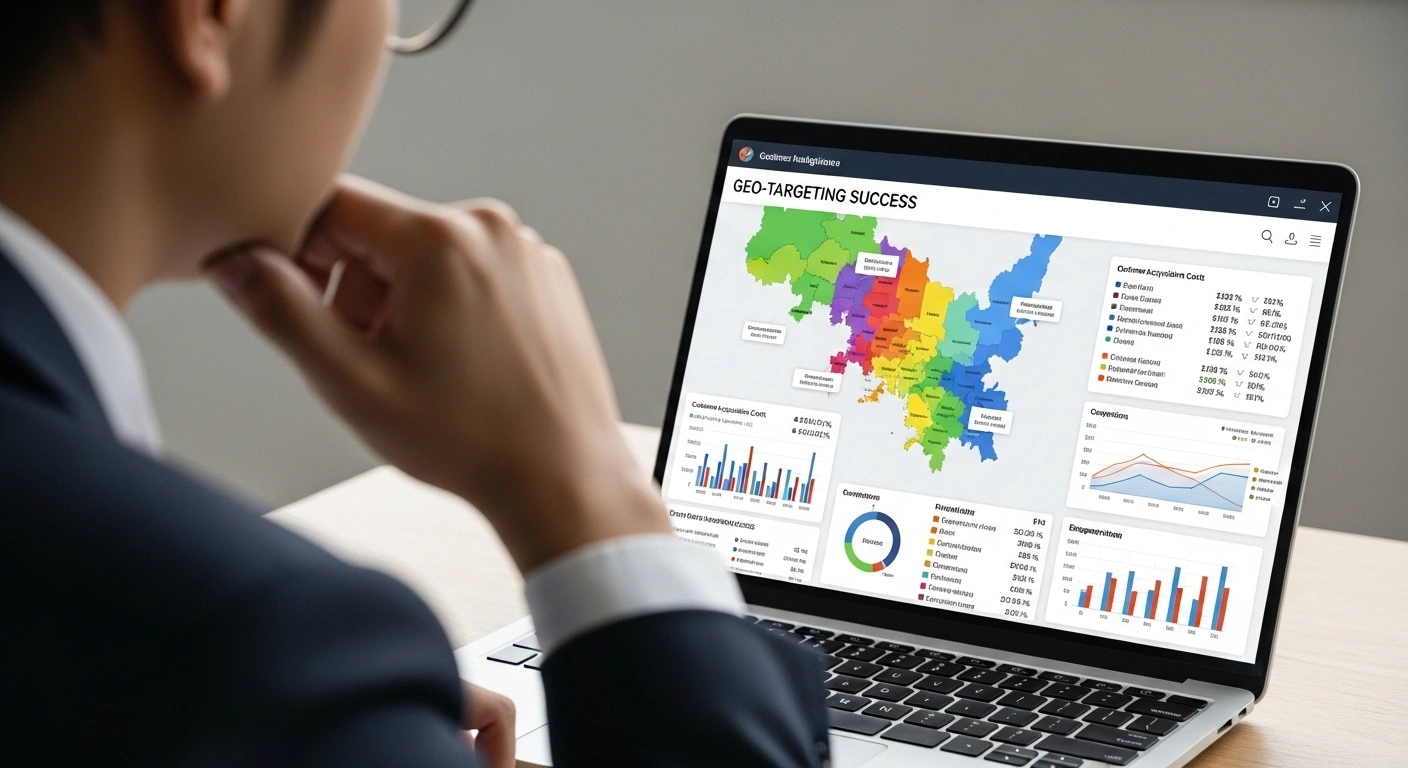
Effective geo-targeting requires continuous measurement and refinement. Leverage Google’s own robust tools to understand your geographic performance, identify areas for improvement, and validate your return on investment. Without data, your efforts are merely guesswork.
1. Google Business Profile Insights: Your Local Performance Dashboard
Your GBP Insights provide critical geo-specific data directly within your dashboard (accessible by simply searching for your business name when logged into your Google account). Regularly analyzing these insights is crucial for understanding performance, identifying opportunities, and proving ROI.
- “How Customers Search for Your Business”: This report reveals whether customers found you via “Direct Searches” (searching directly for your business name) or “Discovery Searches” (searching for a category, product, or service, e.g., “pizza near me”). A high rate of discovery searches for geo-modified terms indicates effective geo-targeting.
- “Queries used to find your business”: This is your goldmine. It shows you the *exact keywords* users typed that led to your business appearing. Analyze these to confirm if you’re being found for your target geo-modified terms (e.g., “plumber Jamaica Plain,” “bakery near me Allston,” “Boston Common hotel”). This data is invaluable for refining your GBP content, website SEO, and keyword strategy.
- “Where Customers View Your Business on Google”: This shows you if your business appeared more often in Google Search results or Google Maps results, providing insight into which platform is driving more visibility.
- “Customer Actions”: (Your Conversion Data) These are your most critical Key Performance Indicators (KPIs), representing direct conversions from your GBP:
- Website Visits: Clicks to your website.
- Direction Requests: Requests for directions to your physical location (a direct indicator of increased foot traffic).
- Phone Calls: Calls made directly from your GBP listing.
- Messages/Bookings: Interactions via GBP messaging features.
Monitor these actions closely. A surge in direction requests from a specific Boston neighborhood, for instance, confirms effective geo-targeting for that area.
- “Photos”: This section tracks photo views compared to other businesses in your category. More views and more photos often correlate with higher engagement rates and signals of prominence.
- “Popular Times”: While not a direct geo-metric, understanding when your business is busiest can help optimize staffing, potentially inform ad schedules, or timing for GBP posts for peak local demand in your area.
2. Google Analytics 4 (GA4): Deeper Website Geo-Data & User Behavior
GA4, with its event-based tracking model, provides powerful, granular geographic insights into your website traffic and user behavior, helping you understand if specific content is effectively fulfilling its intended geo-targeting purpose.
- User Location Reports: Analyze your website traffic by city, region, and even narrower geographic segments if you have sufficient data volume. This confirms where your website visitors are originating from. Look for unexpected locations or confirm that your target Boston neighborhoods are indeed sending qualified traffic.
- Traffic by Landing Page: Identify which of your specific location or service area pages are attracting the most geo-targeted traffic. Correlate this with on-page engagement metrics and conversion goals.
- Conversions by Location: Set up conversions (e.g., contact form submissions, phone calls via website tracking, online purchases, appointment bookings) and analyze which geographic areas are generating the most leads or sales. This directly helps prove the ROI for your specific geo-targeting efforts.
- User Flow & Paths: Analyze how users navigate your site. Do they move from a general “Services” page to a “Boston Services” page, then to a “Contact Us” page? This indicates a successful journey through your geo-targeted funnel.
- Device Categorization: Understand if mobile traffic (which is highly location-aware) is performing better or differently for your geo-targeted pages compared to desktop traffic.
3. Google Search Console (GSC): Understanding Google’s Perception of Your Geo-Relevance
Google Search Console (GSC) is crucial for understanding how Google perceives your content’s geographic relevance and intent fulfillment. It provides direct data from Google itself.
- Performance Report (Queries & Pages): Analyze search queries where your pages appear and their click-through rates (CTR). Use the “Pages” filter to see which of your specific location or service area pages are ranking for geo-modified keywords. Look for high CTRs on geo-specific queries, which indicates Google sees your page as highly relevant to that intent.
- Performance Report (Countries/Cities Filter): Filter your performance data by specific countries or cities. While this might be less granular for individual Boston neighborhoods, it confirms your visibility in the broader Boston area and surrounding towns.
- Core Web Vitals Report: Ensure your website performance is optimal for users across different geographic areas, as network conditions or device types can vary. Poor Core Web Vitals (INP, LCP, CLS) can negatively impact geo-targeted rankings.
- Enhancements Report: Check for any issues with Local Business Schema markup or other structured data that might hinder your ability to signal geographic relevance effectively.
4. Specialized Local SEO Rank Tracking Tools: Hyper-Granular Performance
For truly advanced geo-targeting analysis, invest in a specialized local SEO rank tracking tool (e.g., BrightLocal, Semrush Local SEO, Whitespark Local Rank Tracker, Map Rank). These tools go beyond general rank tracking and allow you to track your rankings for specific keywords *from different zip codes, specific street addresses, or even precise points on a map* within Boston.
- Hyper-Local Rank Tracking: Monitor your position in the local pack and organic results for terms like “best coffee shop 02108” (Financial District) or “plumber near me Jamaica Plain” from the perspective of a user in that specific location.
- Competitive Analysis: See how your competitors are performing for geo-targeted terms in various areas.
- Visual Heatmaps: Many tools offer visual heatmaps that show your ranking performance across a geographic grid, immediately highlighting areas where you are strong and where you need to improve your geo-targeting efforts.
This granular data is essential for understanding your true geographic reach and performance across Boston’s complex and diverse neighborhoods, allowing for precision adjustments to your geo-targeting strategy.
—
Conclusion: Projecting Proximity & Dominating Boston’s Local Terrain

In the dynamic Boston market of 2025, proximity remains an undisputed king in local search. While you cannot physically move your business to be next to every potential customer, you wield immense power to influence how Google perceives your geographic relevance and authority. Mastering geo-targeting is about meticulously optimizing every digital touchpoint to project your business’s presence far beyond its immediate physical location, reaching high-intent customers in every relevant Boston neighborhood and beyond.
By diligently optimizing your Google Business Profile for precise addresses or service areas, leveraging Google Posts and visuals for geo-specific communication, crafting unique and compelling localized content for specific neighborhoods on your website, ensuring unwavering NAP consistency across the web, and strategically building local links, you empower Google to confidently present your business as the most relevant, prominent, and, crucially, the closest solution to a searcher’s immediate need. This proactive, data-driven approach, constantly refined through meticulous analytics, allows your Boston business to not only navigate the shifting economic landscape but to truly dominate its local terrain, driving consistent foot traffic and fostering enduring customer loyalty.
This comprehensive guide has equipped you with the advanced strategies to project your business’s presence across Boston’s diverse neighborhoods and beyond. But being found is only one part of the equation. Next, we’ll turn our attention to arguably the most powerful form of social proof in the digital age: cultivating a five-star reputation through strategic customer review management. Because in Boston’s competitive market, being found is good, but being trusted is everything.
Continue to Post 5: Beyond Yelp: Cultivating a Five-Star Reputation with Boston Customer Reviews →
Is your Boston business struggling to expand its reach across key neighborhoods, despite a fantastic product or service? The experts at **seobostonma.com** specialize in advanced geo-targeting and comprehensive local SEO strategies that deliver measurable results for Boston businesses like yours. Schedule a free consultation with our team today and let’s unlock your path to hyper-local dominance across all of Boston’s vibrant communities.




